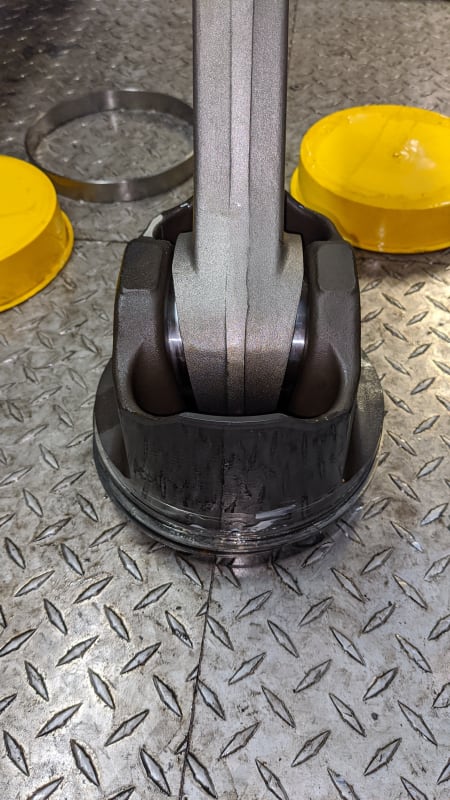ok I finally have a copy from John Manning’s book, Internal Combustion Engine Design, published by Ricardo, 2012. ISBN 978095732920-1
directly from Ricardo engineering
here's a few question that I still not fully understand especially concerning the "Cylinder Block and Cylinder head"
especially from the Sketch DRAWINGS to the Final detail BLUEPRINT DRAWINGS before the first procurement prototype engine
1) when designing an engine "cylinder block" DRAWINGS is there any parts of the engine assembly preliminary design DONE before the said cylinder block DRAFTTING Ex: Crankshaft, camshaft, ect .
2) the designing process of the cylinder block DRAWINGS generally does it start with "Bottom Up design" or "Top Down design".
3) in a cylinder block design preliminary DRAWINGS what are the block Features design DRAFTING sequences Ex: A) crankcase, B) cylinders layout, C) lower cylinder deck, D) water jacket, E) upper cylinder deck .
4) How does the interaction Between the different engineers and the draftsman Works? who will be in charge of the designed features?
of the specific engine part for a cylinder block DRAWINGS
5) at last all the above questions BUT for the "Cylinder Head" part
I am interested in the principle behind engine designing DRAWINGS only, not much in CAD or FEA and or CFD. I am just intrigue by the way they design major engine part like in the 50's, 60's and 70's drafting tables and slide rulers! BUT any computer related design subject still appreciated as a feedback casting and machining drawings both are in my field of interest
casting and machining drawings both are in my field of interest
and if any GOOD publication of concern of the above subject and questions I'll be happy to source if I can get them
engine size mostly of my interest would be bellow 1000 CU-IN or about 17 liters in displacement gas or diesel ICE industrial or automotive from 1 to 8 cylinders either inline or v configuration
any reply appreciated
Steve
directly from Ricardo engineering
here's a few question that I still not fully understand especially concerning the "Cylinder Block and Cylinder head"
especially from the Sketch DRAWINGS to the Final detail BLUEPRINT DRAWINGS before the first procurement prototype engine
1) when designing an engine "cylinder block" DRAWINGS is there any parts of the engine assembly preliminary design DONE before the said cylinder block DRAFTTING Ex: Crankshaft, camshaft, ect .
2) the designing process of the cylinder block DRAWINGS generally does it start with "Bottom Up design" or "Top Down design".
3) in a cylinder block design preliminary DRAWINGS what are the block Features design DRAFTING sequences Ex: A) crankcase, B) cylinders layout, C) lower cylinder deck, D) water jacket, E) upper cylinder deck .
4) How does the interaction Between the different engineers and the draftsman Works? who will be in charge of the designed features?
of the specific engine part for a cylinder block DRAWINGS
5) at last all the above questions BUT for the "Cylinder Head" part
I am interested in the principle behind engine designing DRAWINGS only, not much in CAD or FEA and or CFD. I am just intrigue by the way they design major engine part like in the 50's, 60's and 70's drafting tables and slide rulers! BUT any computer related design subject still appreciated as a feedback
and if any GOOD publication of concern of the above subject and questions I'll be happy to source if I can get them
engine size mostly of my interest would be bellow 1000 CU-IN or about 17 liters in displacement gas or diesel ICE industrial or automotive from 1 to 8 cylinders either inline or v configuration
any reply appreciated
Steve

